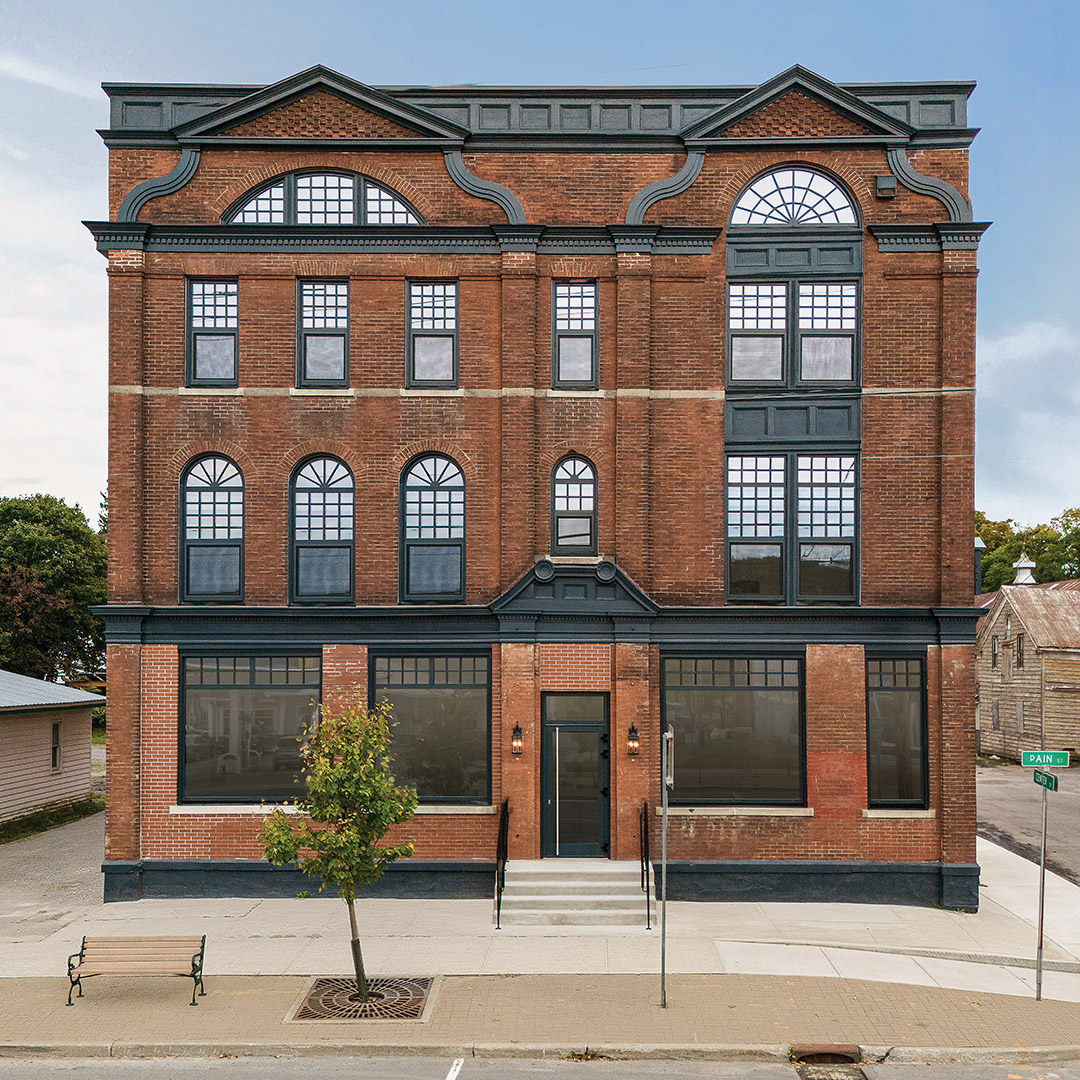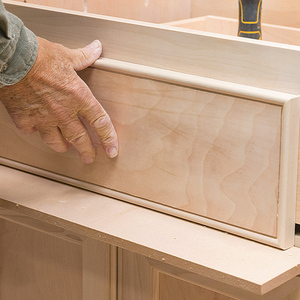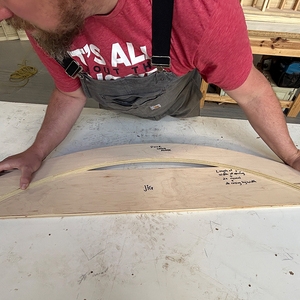I am in the process of writing up a framing spec for my framer and his crew. I am doing this in an effort to make sure we are both on the same page as far as what is expected for level of quality, responsibilities, etc. I have the obvious stuff in there such as work must meet code, framer must cover his crews WC, studs crowned, plumb, spacing of sturdi-floor sheets etc. But I was hoping some of you might have other suggestions or samples of what you use.
Thanks for any help.
Regards,
Dennis



















Replies
Someone else will know the answer... but I gotta think there are published quality control specs out there for framing, possibly from NARI or AIA or someone like that. I used to build cabinets according to specs published by the Woodwork Institute of California, and their specs covered allowable tolerances for every dang thing... how far out of plumb, level, or plane, tightness of joints, consistency of reveals, and on and on. Bob Kovacs over at the JLC forum would know where to look.
Specs are subjective.
Tadian used to give us thirty pages. Some were very good, some were very stupid. In the end, we all do whatever we want anyways.
Personally, I don't mind if a builder gives me a spec package. In every case except Tadians (which didn't matter because their stuperindendents couldn't read them), the specs were so overbearing, I never bothered to offer a bid! I was able to walk away from those nutcases before i had to deal with them.
Don't go overboard unless you want the worst crews to frame your house. They'll promise you anything...I know what is possible and will never overstate it.
blueIf you want to read a fancy personal signature... go read someone else's post.
Blue, Bob, David,
Thanks for the replies. I couldn't come up with 30 pages if I took a month. I probably won't be over two or three even if I use a really big font. One example of the kinds of things I will include are screws for the sturdi-floor (my preference) vs RS nails (his). Again, just trying to answer some questions before they come up, and make sure we both understand the type of work expected so we can both be satisfied with the job when it is done.
Regards,
Dennis
If you are changing specs like fastener types from what the print shows does your framer get to rebid ? Or are you setting a spec sheet before you go to get bids ? Do you promise to show up every friday with sodas and donuts?
For quality control I always build to the plans supplied . I figure that a neat drawing done with fine lines on a 1/4" to the foot scale alows about 3/16" off of plumb and still be as straight as the print. ;)
cheers...............Rik............
Edited 10/27/2004 12:05 am ET by ARTACOMA
If Blue is framing for you, you had better get the joist blocking details understood up front.
Exaclty Bob!
And if there is joist blocking details specified, I ain't bidding!
blueIf you want to read a fancy personal signature... go read someone else's post.
Ah, the spec sheet. Out here on the left coast the spec sheet is actually a legal tool. Say you and your boys are framing away on a nice new Wal-Mart. Then, during a coffee break, a poorly maintained incoming 747 blows a hydraulic line and crashes into the building, burning it right down to the ground. Of course you are dragged into court, because it was determined that one of your guys left out a joist block. This blatant disregard for the spec sheet will be used to show that Blue Eyed Devil Framing, Inc. was at least partially liable for this tragic turn of events. Your liability premiums escalate out of control, much like the construction industry in general and soon you are reduced to doing patio covers for suburbanites. I swear that almost all the fun has been beaten out of construction. But hey, I'm not bitter.
Commercial is a different beast.
In residential, we have to meet the state building code. That's what my contract says...that's what we do.
blueIf you want to read a fancy personal signature... go read someone else's post.
I have one that I would like to give the contractor...
Hire competent framers and the rest will take care of itself.
DJJ As a custom builder This is my advice Do your homework in looking at framers other jobs before you give him a spec sheet on how to do things ! You know us builders ,we all think we're the best ! And unfortunately that may not be the truth ! But I know that If someone hired me to do a Job and then gave me a list of how to do things ,I don't think I would like it !The spec sheet should come from the architect it seems more of a routine thing or standard practice other than you giving him a sheet of specs like you question his ability to do things right .
Not exactly a spec, but you may want to include these in your writeup.
Use only acceptable lumber. Set aside all crooked, split, twisted, or otherwise unusable pieces.
Crown all joists, studs, and rafters.
Retighten all accessible anchor bolts after framing is up.
Install all firestop blocking as required by code.
Install bridging or blocking in sawn lumber joisted floorframes, in centers of all spans exceeding 8 feet, and at joist laps or butts.
Use construction adhesive to bond subfloor to joists, and apply ahead only as much as can be covered and fastened quickly. Screw-fasten subfloor to joists.
Frame any soffit drops or ceiling drops as shown on plans.
No overcuts permitted on birdsmouth and stair stringer cuts.
True up and brace all wallframes for each floor before setting floorframes or roof framing above.
Install all wall blocking as directed by builder, for cabinetry, hardware in baths, and stair trim and railings.
Insulate all exterior wall cavities made inaccessible by sheathing.
Use specified size and number of nails for all hangers and connectors.
If installing windows and exterior doors, follow NAHB standards for flashing, sealing, and weatherproofing.
Use builder-provided trash cans for all your miscellaneous waste.
Use builder-provided dumpster or designated spot for all lumber scrap.
When punch list is complete, leave jobsite in broom-clean condition.
Good list.
I'd add
Do not overdrive sheathing and flooring nails. Take 5 secs to turn down the compressor.
MERC>
I like the list. But I have a couple of small edits.
I'd combine the two blocking lines together so that they would complement each other (but also so that they cannot be construed to be different).
Some jurisdictions would need qualifying language, especially about how "inclusive" a list is (that lets it "expand" to include "normally used" items, so "bridging" would include the upset blocks needed for TJIs, etc.)
Refer the insulation back to the plans somehow, otherwise the instructions there will require insulated corners & Ts in the garage.
The trash items are particularly cogent. I'd just leave the responsible parties undefined. I have a local jurisdiction that wants lumber scraps handled separately from other "construction debris." So, the framer is often responsible for his own waste material, not GC/Owner. (Makes for odd-looking "draft" specs when the trash is split out by trade and type.)Occupational hazard of my occupation not being around (sorry Bubba)
I'll add a few more.
Be aware of all interior and exterior finish and trim details that may require any framing or backing details, and do work accordingly.
Discuss with owner or GC, before beginning work, all framing details that will be done that are not explicitely called out on plans.
Bring to owner or GC's attention, immediately upon encounting them, any dimension errors on plans, including framer's suggested work-around method. (Nine-year-olds are carrying camera cell phones nowadays.)
No overcuts permitted on birdsmouth and stair stringer cuts.
Bob,
You are kidding about the overcut on the birdsmouth right?
Joe Carola
Sorry, my mistake. I got carried away. I doesn't matter on a typical rafter cut. I might want to revisit the issue for rafters if we'll have great big tails, though.
But I stand firm on this issue for stairs.
I agree with you on stairs.
Joe Carola
"Use only acceptable lumber. Set aside all crooked, split, twisted, or otherwise unusable pieces."
I just finished a job that after we called to order replacements for the bad lumber, the contractor calls back and informed us that the lumber company wouldn't send out the lumber if it was bad and that we were to use the lumber they sent.
Finished the job, took the money, will not return his phone calls!
Thanks everyone! I appreciate all the suggestions very much. I had about half of them so this was a big help.
Regards,
Dennis
every framer must carry at least one "speed square" in their tool belt at all times while on site ...
Jeff
And be able to demonstrate sawing all rafter cuts without first drawing lines.
Makes me think of "Name that Tune!"
"I can name that tune in no notes!"
Calm down there Bob and give it a try. If you can't do it, then clean your glasses.
blueIf you want to read a fancy personal signature... go read someone else's post.
I'll be doing some framing next week, Blue, and I'll give it a try. Report to follow.
Awsome Bob!
blueIf you want to read a fancy personal signature... go read someone else's post.
On jobs I framed, there should have been something that specified a sharp saw blade on saws, or at least one that was purchased within the past ten years! Maybe brakes on all four wheels of the lift truck, compressor in working order and not allowed to be hooked up by stuffing extra wires in the outlet with the plug (hated unplugging it when it was jerry-rigged like that!), just to name a few! ;-)
I,m not a framer but isnt all frame work pretty much done the same way. I mean 16 oc, plywood on the corners, etc. I would think that spec are not design to hurt a contractor but just get them on the same page.
When I took Architectural Technology classes at community college, I saw many specs that added a sort of CYA clause at the bottom--"all work to be done in workmanlike manner" (what exactly does that mean?, and it's sexist besides ;-) ) or "all work to be done according to industry standards". While subjective, wording something like that may help to cover things you just can't, or didn't remember to, spell out in the specs. Saw lots of "perform [such and such task] according to ASTM #." This was a long time ago, so don't quote me, but I also remember that drawings took precidence over written word documentation in court if there was a discrepancy between the two (e.g., drawings show 2x10's @16" o.c. and someplace else in the specs it says, "Joists to be 2x8's at 16" o.c.").
Not sure if it was mentioned, but the best way to go is to make your framing specs part of the plans - if it's not too late. When I did my own house, it was in a paragraph called "framing Notes". Since it's a pretty universally accepted requirement to build to plan (as much as possible), whatever is in the plans carries some weight. Actually, I had a whole page devoted to construction notes, with maybe a 10 - 15 item bulleted list for each of the major trades - about 12 in all. Don't get carried away though, because, as said above, too many specs will definitely scare off some very competent crews.
The thing is though, don't think that just because you are building this house, you will have complete control. To some degree, you have to rely on the experience and judgement of the subs you hire to do the work right, and after all, they are gonna know know more about their job, then you do. (although they may have a slightly different agenda). I guess part of the knack of being a builder is to motivate your people to do good work without being overbearing. One way to do this is to be able to recognize good work and compliment the guys on what they do well. Again back to my personal home, one day we ran out of 1x4s - they were doing let in 1x4 bracing on many walls - interior too. Not necessarily my preference, but that was their method to get things plumb and true. Anyway, we ran out of 1x4s - probably because I didn't know they were going to go crazy with the diag bracing. The framer's main guy started making 1x4s out of 2x4s with a skill saw - cutting strictly by eye. I was impressed and let them know (right before I went to the store to get more 1x4s). As a matter of fact, I'm still impressed. OK - so a lot of the sheathing nails were overdriven, and I mentioned that too, but you gotta pick your battles. Also, this was in the days before tool-less depth of drive adjustable guns.
Good Luck,Matt
Good Post Matt.
I like that..."pick your battles".
I agree.
I would recomend walking through the framer's last job and simply make a decision...is this the type of framing I'm looking for? then ask for anything that you'd like different. I've walked through with builders on their homes....they telling me stuff etc. It helps...I'm willing to do lots of things different...as long as I'm getting paid.
I won't carry a speed square nor put in strapping or sokid blocking....at any price!
blueIf you want to read a fancy personal signature... go read someone else's post.